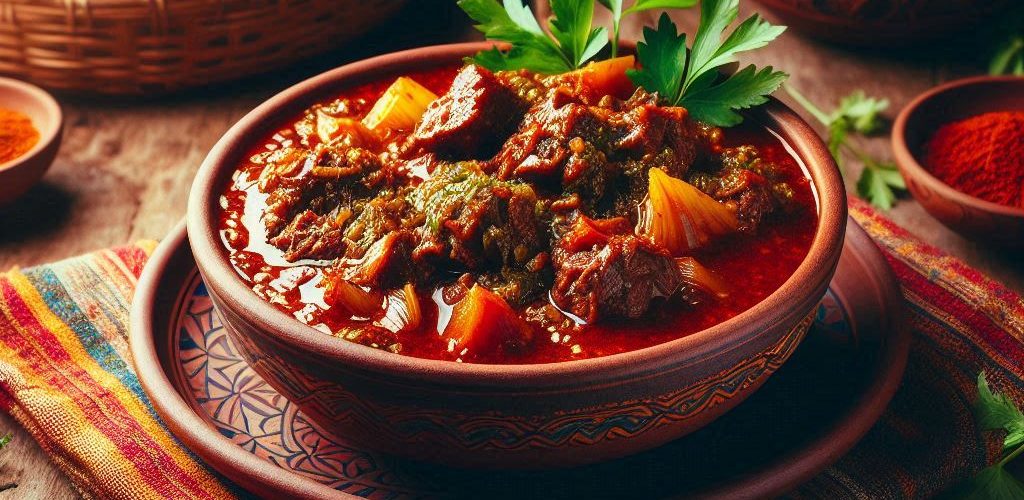Ethiopian cuisine is renowned for its rich, diverse flavors, and one dish that epitomizes this culinary tradition is Zigni, a spicy beef stew that is sure to tantalize your taste buds. This dish, characterized by its deep flavors and vibrant spices, is a staple in Ethiopian households and is often the star of communal dining experiences.
The Heart of Zigni: Ingredients and Preparation
At the core of Zigni is tender beef, which is typically cut into chunks for a heartier stew. The meat is bathed in a sauce made with berbere, a signature Ethiopian spice blend that combines chili peppers, garlic, ginger, and an array of other spices. The heat from the berbere is what gives Zigni its distinctive kick, and it can be adjusted depending on personal preferences.
Preparation begins with marinating the beef in a mixture of the berbere spice, allowing the flavors to penetrate the meat. Once marinated, the beef is browned in a pot with onions, giving the stew a rich caramelized flavor. After browning, diced tomatoes are added, along with additional spices and water to create a thick, flavorful sauce. Simmering the stew for a couple of hours allows the beef to become tender and the flavors to meld beautifully.
Sides and Serving Suggestions
In Ethiopia, Zigni is traditionally served with injera, a spongy, fermented flatbread that is not only a staple in Ethiopian cuisine but also serves as an edible utensil. The injera soaks up the spicy stew, making each bite a flavorful experience.
For those who enjoy a bit of contrast, consider serving Zigni with a side of sautéed greens, such as gomen (collard greens), which helps to balance the heat of the stew. Additionally, a refreshing salad made with tomatoes, onions, and peppers offers a cool palate cleanser.
Cultural Significance
Zigni is more than just food; it is a social experience. Ethiopian meals are often communal, with diners sharing from a common plate, fostering a spirit of connection and togetherness. It is common for families and friends to gather around a large platter of Zigni and injera, allowing everyone to enjoy the meal while engaging in lively conversation.
Tips for Cooking Zigni at Home
- Choose Quality Ingredients: Opt for grass-fed beef if possible for a more robust flavor. Fresh spices will also yield the best results.
- Adjust the Heat: Berbere can vary in spiciness, so taste as you go. You can also adjust the amount of berbere based on your heat tolerance.
- Be Patient: Let the stew simmer for long enough to develop its flavors. The longer it cooks, the more tender the beef will become.
- Experiment: Feel free to add vegetables like carrots or potatoes for a heartier version of the stew.
Conclusion
Whether you’re an experienced cook or a newcomer to Ethiopian cuisine, trying your hand at making Zigni can be a rewarding culinary adventure. With its spicy, rich flavors and communal serving style, Zigni offers an authentic taste of Ethiopia that is sure to impress family and friends alike. So gather your ingredients, invite your loved ones, and experience the joy of sharing a delicious platter of Zigni together!




Add comment